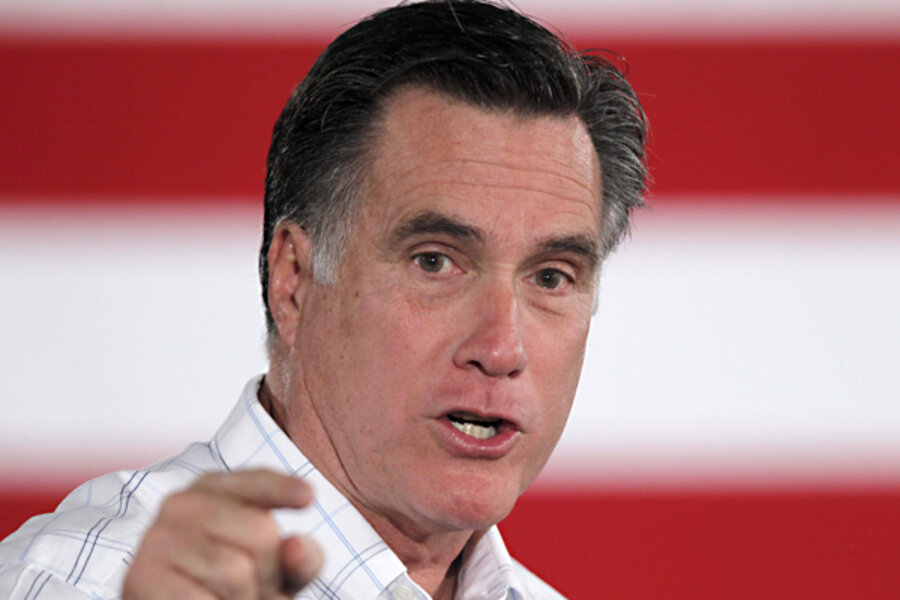Romney's tax plan: Big benefits for the wealthy, higher deficits
Loading...
A new Tax Policy Center analysis finds that Mitt Romney’s tax plan would cut taxes for millions of households but bestow most of its benefits on those with the highest incomes. At the same time, it would significantly cut corporate taxes and add hundreds of billions of dollars to the deficit.
Compared to current law (assuming the Bush/Obama tax cuts expire as scheduled at the end of this year), Romney would cut taxes by $600 billion in 2015 alone. Relative to a world where those tax cuts remained in place, he would add about $180 billion to the deficit in that year.
In many ways, Romney’s tax plank is a fairly mainstream Republican offering. No major tax reform. Certainly no 9-9-9-like proposal to replace the current revenue system with a consumption levy. And while Romney is proposing huge tax cuts, they are more modest than those of his rivals. Newt Gingrich’s tax package, for instance, would add $1 trillion to the deficit in 2015. Still, a $600 billion tax cut is worthy of note.
For individuals, Romney starts by making permanent both the 2001 and 2003 tax cuts and the “patch” that protects millions of middle- and upper middle-income households from the Alternative Minimum Tax.
At the same time, he’d end President Obama’s 2009 stimulus tax reductions, including Obama’s more generous versions of the child tax credit and earned income credit—both aimed at helping low-income working families. He’d also repeal the tax increases included in the 2010 health reform law.
But Romney doesn’t stop there. He’d make capital gains, dividends, and interest income tax-free for those making less than $200,000 and repeal the estate tax (though he’d retain the gift tax).
He’d cut the corporate rate from 35 percent to 25 percent, make the research and experimentation tax credit permanent, and temporarily allow firms to continue to write-off the full cost of capital investment as soon as they acquire the property. Multinationals would get a temporary tax holiday for overseas profits they bring back to the U.S.
Compared to current law, about 44 percent of those making between $10,000 and $20,000 would get a tax cut that would average about $274. No one in that income group would pay more, but more than half would see no change in their tax bill.
Nearly all middle-income households would get a tax reduction. Among those making $50,000 to $75,000, the average tax cut would be about $1,800.
But much of the largess goes to those with the highest-incomes. Households making more than $1 million would get an average tax cut of almost $300,000, largely because, as owners of capital, they’d receive the bulk of the benefit of Romney’s very generous corporate tax reductions. While those making $1 million-plus pay about 20 percent of all federal taxes, they’d receive more than 28 percent of Romney’s tax cuts.
The story is a bit different if you start by assuming the Bush/Obama tax cuts are made permanent. Compared to that already-generous law, the average tax cut for all households shrinks from $3,500 to about $1,000 and a sizable number of low-income families would see their taxes go up.
For instance, about 15 percent of those in the $10,000 to $20,000 income group would get an average tax cut of about $140, but 20 percent would get hit with an average tax increase of $1,000, mostly because Romney would bring back the less generous versions of those refundable child and earned income credits.
About one-third of those in $40,000 to $50,000 group would get a tax cut that would average about $400, but about one-six would face a tax increase of nearly twice as much.
Almost everyone who makes more than $1 million would get a tax cut averaging roughly $150,000. As a group, they’d receive nearly half the benefit of Romney’s tax plan.
Romney says he’d rewrite the entire tax code–someday. But he doesn’t say how or when. Until he does, a Romney Administration’s revenue agenda would look a lot like President George W. Bush’s, just more so.





